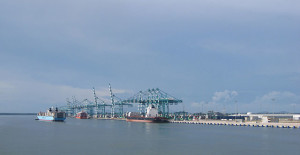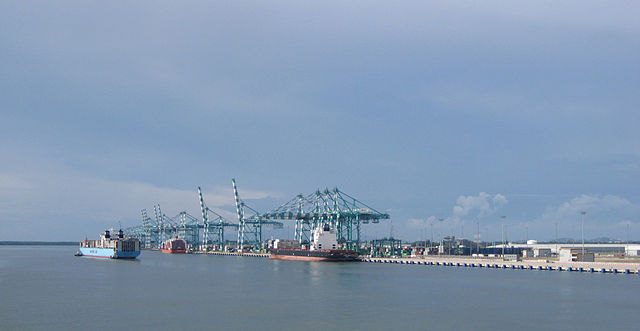 Malaysia’s port operators have been urged to upgrade their port capacity and infrastructure in order to accommodate ultra-large container vessels (ULCVs) in two years’ time when shipping companies are expected to take delivery of these mega ships.
Malaysia’s port operators have been urged to upgrade their port capacity and infrastructure in order to accommodate ultra-large container vessels (ULCVs) in two years’ time when shipping companies are expected to take delivery of these mega ships.
In making the call, Abi Sofian Abdul Hamid, NCB Holdings Bhd Group managing director, said a port’s success is very much influenced by the patronage of giant global shipping companies that dominate long-distance routes such as the Asia-Europe lane.
These carriers including Maersk Line, Mediterranean Shipping Co., CMA CGM, United Arab Shipping Co., and China Shipping Container Lines have placed orders for mega box ships that are scheduled for delivery from now until 2018, Abi Sofian told Bernama, Malaysia’s national news agency, recently.
Hong Kong-based Orient Overseas Container Line and Japan’s Mitsui O.S.K. Lines are also set to beef up their fleets with vessels of 20,000-TEU (twenty-foot equivalent units) capacity for the Asia-Europe route.
“These developments show port operators that they should be ready with the capacity and facilities if they are to compete for ultra-large vessels in the period,” he added.
Both the local port and shipping industries are saddled with a mismatch in demand and sailing slot and capacity, affecting freight rates and in turn the local shipping industry, he added.
Ports should have a long-term plan to meet this challenge head on to ensure continued competitiveness, he continued. Port Klang, for one, needs to be better prepared to ensure container flows from ultra-large vessels do not go to other ports.
Malaysia’s cumulative container throughput is 20 million TEUs, with half accounted for by Port Klang and the rest by the ports of Tanjung Pelepas, Penang, Pasir Gudang, Kuantan, Bintulu, Teluk Sepanggar, and Senari.
Port Klang’s strategic location gives it a big opportunity to explore maritime trade, as other ports, like those in southern Thailand and Sumatera, are unable to meet the demand, he pointed out.
“Jakarta and Singapore are too far and would be too costly,” he said, adding that all resources should be utilized toward making Port Klang one of the 10 busiest ports in the world that can compete with Singapore, which is building the Tuas mega terminal that is envisioned to have a capacity of 65 million TEUs when completed in 2026.
Busan, Ningbo ink port cooperation pact
In other developments, South Korea’s Busan Port and Ningbo Port in China signed an amity agreement on July 10 strengthening cooperation between the ports.
The Busan Port Authority in a statement said that the agreement aims to achieve mutual development for the two ports through regular discussions and periodic technology and information exchange.
Photo: Xtrememachineuk





